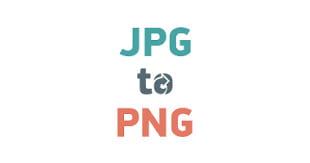Facebook Marketing Training in Chandigarh
Introduction
In the digital era, social media has become an indispensable tool for businesses to connect with their audience and drive growth. Among the myriad of platforms available, Facebook stands out with its vast user base and robust advertising features.
In Chandigarh, a city renowned for its entrepreneurial spirit, Facebook marketing training programs empower marketers and business owners to harness the power of social media to achieve their goals.
This article explores the realm of Facebook marketing courses in Chandigarh, their associated costs, the complexity of Facebook marketing, the types of strategies employed, and concludes with insights into the importance of mastering Facebook marketing.
What are the Facebook Marketing Courses?
Facebook marketing courses are specialized programs designed to equip individuals with the knowledge and skills necessary to leverage Facebook’s advertising platform effectively. These courses cover a diverse range of topics, including:
Understanding Facebook Ads: Participants learn about the various ad formats available on Facebook and how to create and manage ad campaigns tailored to their business objectives.
Audience Targeting: Strategies for identifying and targeting specific demographics, interests, and behaviors to maximize ad reach and engagement.
Creative Development: Techniques for developing compelling ad creatives, including images, videos, and ad copy, to capture the audience’s attention and drive action.
Performance Analysis: Participants learn to analyze ad performance metrics and utilize data-driven insights to optimize ad campaigns for better results.
Advanced Strategies: Advanced tactics such as retargeting, lookalike audiences, and split testing are explored to enhance ad effectiveness and ROI.
What are the Cost of Facebook Marketing Courses
The cost of Facebook marketing courses in Chandigarh varies depending on factors such as the duration of the course, the level of instruction, and the institution providing the training.
Typically, these courses range from a few thousand to tens of thousands of rupees. While beginner-level courses may be more affordable, advanced courses with comprehensive instruction and practical exercises may command a higher investment.
However, the potential return on investment (ROI) from mastering Facebook marketing often outweighs the initial cost of training.
Demystifying the Complexity of Facebook Marketing
While Facebook marketing may appear daunting at first glance, it is accessible to individuals willing to invest time and effort in learning.
Facebook’s advertising platform is designed to be user-friendly, with intuitive tools and resources to guide users through the process of creating and managing ad campaigns.
However, understanding the intricacies of audience targeting, ad creative development, and campaign optimization may require a deeper level of knowledge and expertise. With dedication and continuous learning, mastering Facebook marketing is attainable for individuals of all skill levels.
Types of Marketing Strategies on Facebook
Facebook marketing encompasses various strategies aimed at promoting businesses, products, or services on the platform. Some common types of Facebook marketing strategies include:
Paid Advertising: Running targeted ad campaigns on Facebook to reach specific audience segments and achieve marketing objectives.
Organic Marketing: Building a presence on Facebook through organic tactics such as posting engaging content, fostering community engagement, and responding to audience interactions.
Influencer Marketing: Collaborating with influencers or brand ambassadors to promote products or services to their followers on Facebook.
Content Marketing: Sharing valuable and relevant content, including articles, videos, and infographics, to attract and engage Facebook users and drive traffic to a website or landing page.
Conclusion
Facebook marketing training in Chandigarh offers businesses and marketers the opportunity to tap into the potential of social media to drive growth and achieve their objectives.
By mastering Facebook marketing, businesses can enhance their online presence, reach a broader audience, and drive meaningful engagement and conversions. While Facebook marketing may pose initial challenges, the rewards of effective social media advertising are immense.
Investing in Facebook marketing education is not just an investment in skill development but also an investment in the future success and growth of a business in today’s digital landscape.
Read more article:- Edublogs








